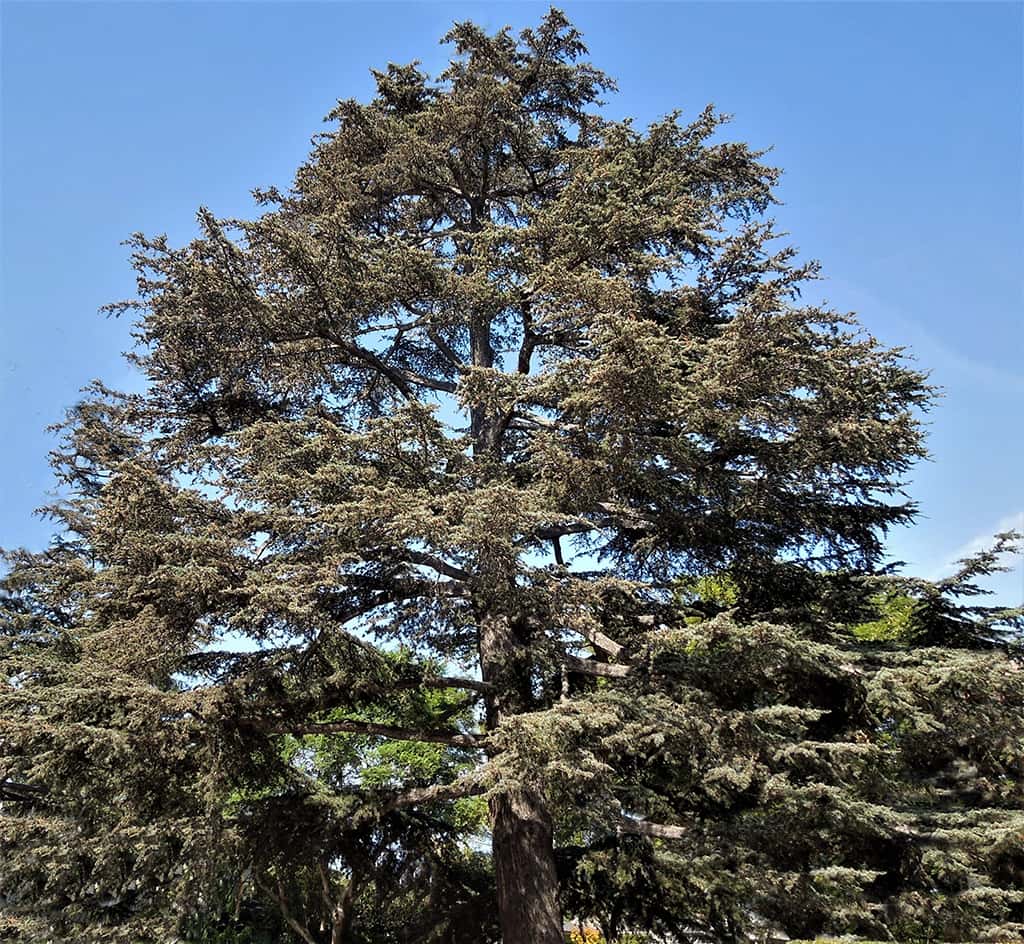Santa Barbara Beautiful Tree of the Month – November 2018

Deodar cedar is a majestic conifer which makes a stunning focal point in the landscape. It is a highly desirable decorative tree, because of its attractive form and its pendulous branches that sway gracefully in the breeze. It is a long-lived tree that provides shade and beauty in every season, is quite resistant to insect and disease problems, and is fairly drought tolerant. A treasure of a tree!
In the spring, male Deodar cedar trees produce abundant pollen from catkins 2-3-inches long. Female trees produce seed in egg-shaped cones 3-5 inches long. Both catkins and cones stand distinctly upright on limbs. Blue-green needles, 1 to 2-inches long, occur in whorls of 15 to 20. The bark has gray-brown scales which provide a soft background to accentuate the foliage. Many cultivars have been developed for distinctive foliage color, growth size, and shape.
Deodar cedar is a fast-growing evergreen tree that needs a lot of space, since it can reach 40 to 50 feet in height and 25 to 30 feet in width, in just in its first 25 years. At maturity, it can develop a rather flat top with broadly spreading horizontal limbs – and can exceed 70 feet in height and 40 feet in width!
This tree can thrive in a wide variety soils, but does not do well in overly wet and poorly drained soils. Surprisingly, it requires very little maintenance, other than a judicious pruning every ten years or so. Not surprisingly, it does require occasional deep watering in periods of extended droughts.
Its scientific name is Cedrus deodara. The genus name, Cedrus, is the Latin name for Cedar trees, and the specific epithet, deodara, is derived from the Hindi word “devadaru”, meaning “tree of the gods”.
It is native to the Himalayan Mountains, above 4,000 feet, from India to Afghanistan, hence its other common name of “Himalayan cedar”. It is worshiped as a divine tree among Hindus. Their reverence and deep appreciation for it comes from its beneficial use in Ayurvedic medicine and as an essential oil in aromatherapy, as well as for its heaven-scented incense. Notably, its resin has remarkable antifungal properties and is an effective insect repellent. Its wood is desirable for all manner of woodworking, because of its durability and resistance to decay.
Deodar cedar has been planted around the world, wherever the climates and conditions are suitable. It has been especially prized in England, since its introduction there in the 1820s, where it is use as a specimen tree on large estates and in parks. It has been planted extensively throughout Santa Barbara for many decades – and makes an important addition to our urban forest.
Some of the best Deodar cedars in town can be seen as street trees on Canon Drive, as landscape trees scattered throughout the San Roque neighborhood, and as park trees in East and West Alameda Plaza.
Tree-of-the-Month articles are sponsored by Santa Barbara Beautiful, whose many missions include the increase of public awareness and appreciation of Santa Barbara’s many outstanding trees and, in a long-time partnership with the City Parks & Recreation Department, the funding and planting of trees along the City’s streets – a project which has resulted in the planting, to date, of more than 13,000 street trees.
Article and photos by David Gress

